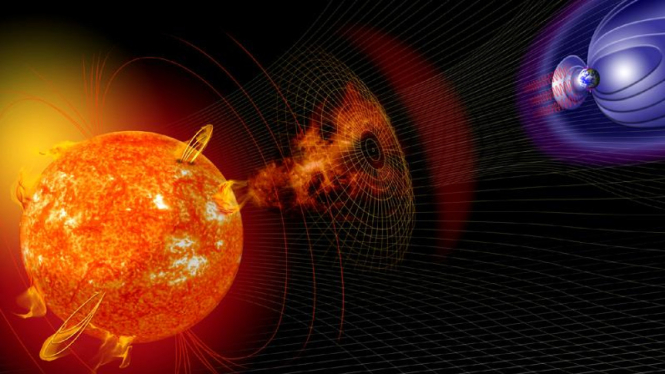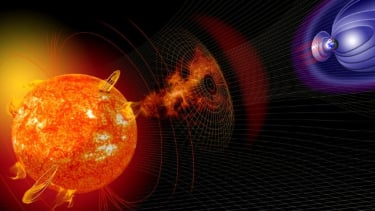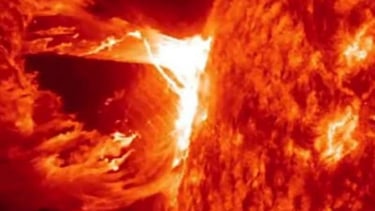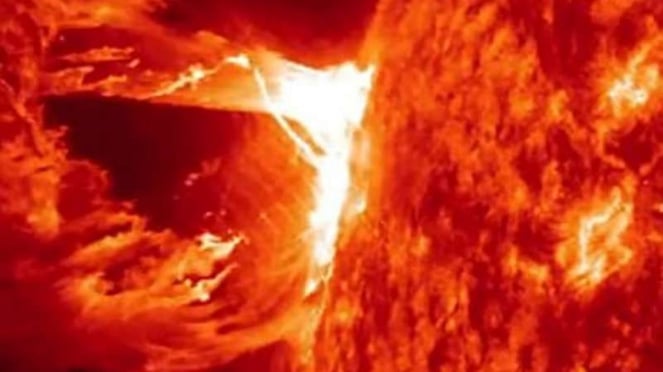- nasa.gov
VIVA – High-speed solar wind or solar storm appearing from a hole in the Sun's atmosphere will hit Earth's magnetic field on Wednesday, August 3, 2022, triggering a small G-1 geomagnetic storm.
The prediction was made by the National Oceanic and Atmospheric Administration's Space Weather Prediction Center (SWPC) after observing gaseous material flowing from the southern hole in the Sun's atmosphere.
A coronal hole is an area in the Sun's upper atmosphere where the electrical gas or plasma of our star is cooler and less dense such holes are also where the lines of the Sun's magnetic field are located.
Instead of revolving back into itself, the light radiates out into space. This allows material from the Sun to escape in torrents that travel at speeds of up to 1.8 million miles each hour or 2.9 million kilometers each hour.
Planets with strong magnetic fields, such as Earth, have the potential to experience geomagnetic storms. During a solar storm the Earth's magnetic field will be slightly compressed by a wave of very energetic particles.
Badai Matahari.
- Daily Mail
These particles will trickle down magnetic field lines near the poles and move molecules in the atmosphere, releasing energy in the form of light to create colorful auroras similar to the Northern Lights.
The storm generated by this debris will be weak. Identified as a G1 geomagnetic storm, it has the potential to cause minor fluctuations in the power grid and affect several satellite functions, including for mobile devices and GPS systems.
According to the Live Science website on Wednesday, August 3, 2022, more extreme geomagnetic storms could disrupt our planet's magnetic field strong enough to send satellites crashing to Earth.
Scientists have previously warned that extreme geomagnetic storms could cripple the internet. Debris erupting from the Sun usually takes about 15 to 18 hours to reach Earth.
This storm comes when the Sun enters its most active phase every 11 years. Astronomers have known this activity since 1775 when the Sun rises and falls in a cycle.

























